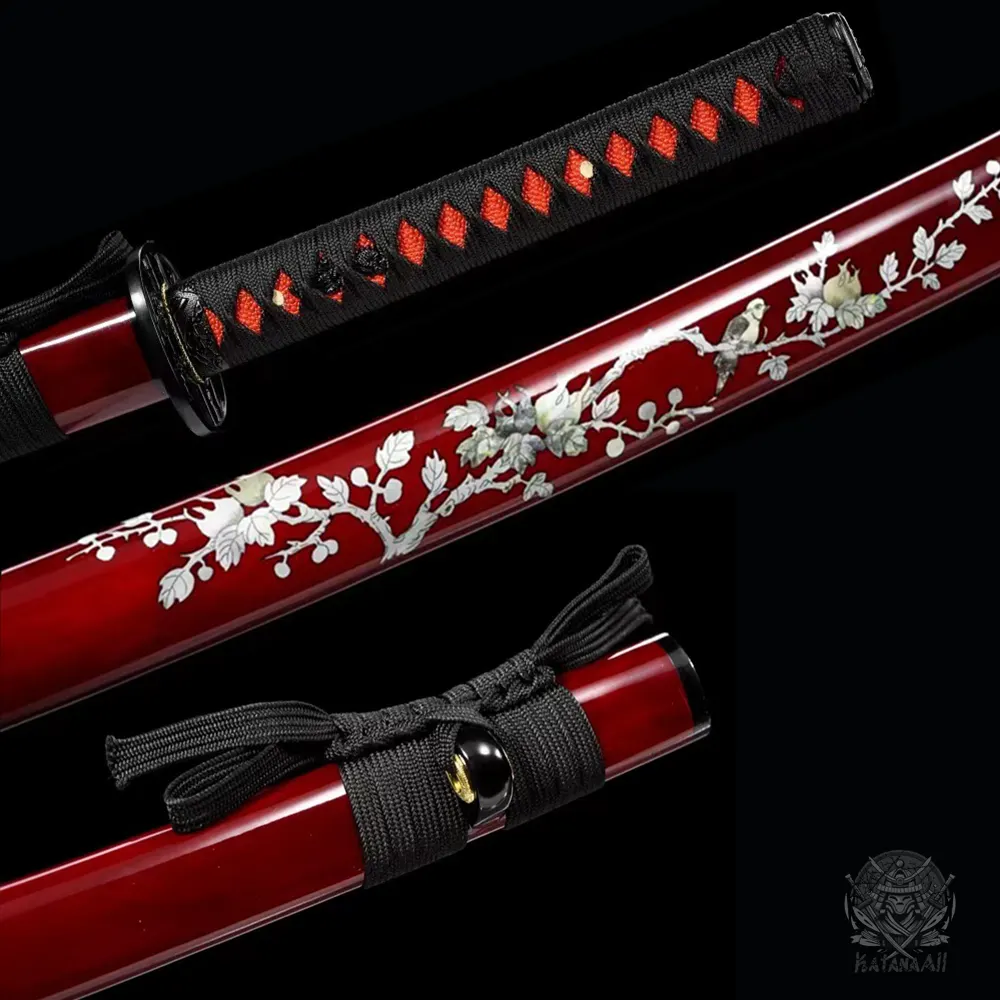How to Tell If a Samurai Sword is Authentic: A Complete Guide for Enthusiasts

Introduction
The samurai sword, also known as the katana, is one of the most iconic and revered weapons in history. It symbolizes the strength, honor, and discipline of the samurai warrior. Over time, the allure of these ancient blades has led to a growing market for both genuine and replica samurai swords. But how can you tell if a samurai sword is authentic? In this guide, we’ll discuss the key characteristics and methods to help you distinguish between a genuine samurai sword and a fake one.
1. Examine the Blade Material
The first step in identifying an authentic samurai sword is to examine the blade material. Traditional samurai swords were made using high-carbon steel, which was carefully folded during the forging process to create a strong, sharp edge. Here’s what to look for:
| Feature | What to Look For |
|---|---|
| Tamahagane Steel | Authentic samurai swords were traditionally made from tamahagane, a type of steel created through a centuries-old smelting process in Japan. This steel is known for its strength, flexibility, and sharpness. |
| Folding Pattern | Authentic katana features a distinctive folding pattern in the steel. You may be able to spot subtle layers or waves in the blade, which were created during the folding process. Fake swords are usually made from low-quality stainless steel, which lacks this characteristic. |
Pro Tip: Look closely at the surface of the blade for subtle waves or grain patterns. These are signs that the blade was folded and handcrafted.
2. Check the Signature (mei)
An authentic samurai sword typically bears a mei (signature), which is carved or engraved on the tang (the part of the blade that fits into the handle). This signature identifies the smith who forged the blade and can be a powerful indicator of authenticity.
| Mei Characteristics | What to Look For |
|---|---|
| Location | The mei is usually engraved on the tang, which is hidden when the sword is assembled. You may need to disassemble the sword to see it clearly. |
| Quality of the Mei | The mei is typically hand-carved and finely detailed, often reflecting the skill of the swordsmith. Fake swords may have poorly executed or machine-engraved signatures that lack precision. |
If the sword bears a signature, it’s a good idea to research the smith’s name to verify its authenticity. Many famous swordsmiths’ signatures can be traced back to specific historical periods.
3. Inspect the Tsuba (Guard) and Fittings
The tsuba (guard) and fittings are important components of an authentic samurai sword. These elements not only serve functional purposes but also have artistic value. Here’s what to look for:
| Feature | What to Look For |
|---|---|
| Material and Craftsmanship | Authentic tsubas are often made from high-quality metals, such as iron, brass, or copper, and are intricately crafted with detailed designs, often reflecting Japanese culture, mythology, or nature. |
| Shape and Size | The shape of the tsuba varies depending on the period and style of the sword, but it is generally round or oval. Check for symmetry and proportionality in the guard’s design. |
| Fittings and Decorations | Authentic katana often have elaborate fittings, such as menuki (decorative grips), fuchi (collar), and kashira (pommel). These fittings are usually made of metal and are artistically crafted to match the overall aesthetic of the sword. |
Pro Tip: Examine the sword’s fittings for signs of craftsmanship and wear. Authentic swords often show subtle signs of age, wear, and craftsmanship, while replicas may have rough or uniform surfaces.
4. Look at the Hamon (Temper Line)
The hamon is a temper line that runs along the edge of the blade. It is created during the differential hardening process, where the edge of the blade is heated and cooled more rapidly than the spine to create a hard, sharp edge while leaving the spine more flexible.
| Feature | What to Look For |
|---|---|
| Appearance of the Hamon | A real katana will have a visible, often wavy, hamon line that runs along the edge of the blade. The line is typically subtle but can vary in pattern, often appearing like a wave or cloud-like shape. |
| Fake Swords | Many modern replicas use stainless steel, which doesn’t undergo the same hardening process, so they often lack a hamon line or may have an artificial one added through chemical treatments or coatings. |
5. Check the Handle (Tsuka) and Tsuka-Ito (Wrap)
The handle, or tsuka, is another key indicator of a sword’s authenticity. Authentic samurai swords have carefully wrapped handles, and the wrap (tsuka-ito) is made from high-quality materials such as silk or cotton.
| Feature | What to Look For |
|---|---|
| Quality of the Wrap | Authentic katana have a tight, uniform wrap of tsuka-ito. The wrap should cover the handle evenly with no loose or frayed ends. Fake swords often have poorly wrapped or machine-woven handles, which lack the skill and care of traditional craftsmanship. |
| Ray Skin (Samegawa) | The tsuka of a genuine katana is typically covered in ray skin (samegawa) beneath the wrap. Ray skin has a distinct texture and is often visible at the ends of the handle. Replicas may use imitation materials that resemble ray skin but lack the distinctive texture. |
6. Consider the Sword’s Age and Historical Context
The age of a samurai sword is also a key factor in determining its authenticity. Historically significant samurai swords are rare and highly sought after, and their provenance (ownership history) can add to their value.
| Feature | What to Look For |
|---|---|
| Antique Swords | Antique samurai swords, especially those made by renowned swordsmiths from the Edo period or earlier, are valuable. Researching the age of the sword and its maker can help determine authenticity. |
| Condition of the Sword | Authentic, older katana often show signs of wear, including light corrosion on the tang or slight imperfections in the blade. A perfectly pristine katana may indicate a replica. |
7. Consult an Expert
If you’re still unsure about the authenticity of a samurai sword, it’s always a good idea to consult with a professional sword appraiser or historian. They can examine the sword in person and provide an expert opinion on its authenticity.
Conclusion
Determining if a samurai sword is authentic requires careful attention to detail. By examining the blade material, signature, tsuba, hamon, tsuka, and other features, you can differentiate a genuine katana from a replica. Additionally, the sword’s age, condition, and historical context provide important clues. If in doubt, consulting an expert is the best way to ensure that the sword you’re considering is authentic.
Whether you’re a collector or simply fascinated by the craftsmanship behind samurai swords, understanding how to identify an authentic katana can deepen your appreciation of these legendary weapons.
